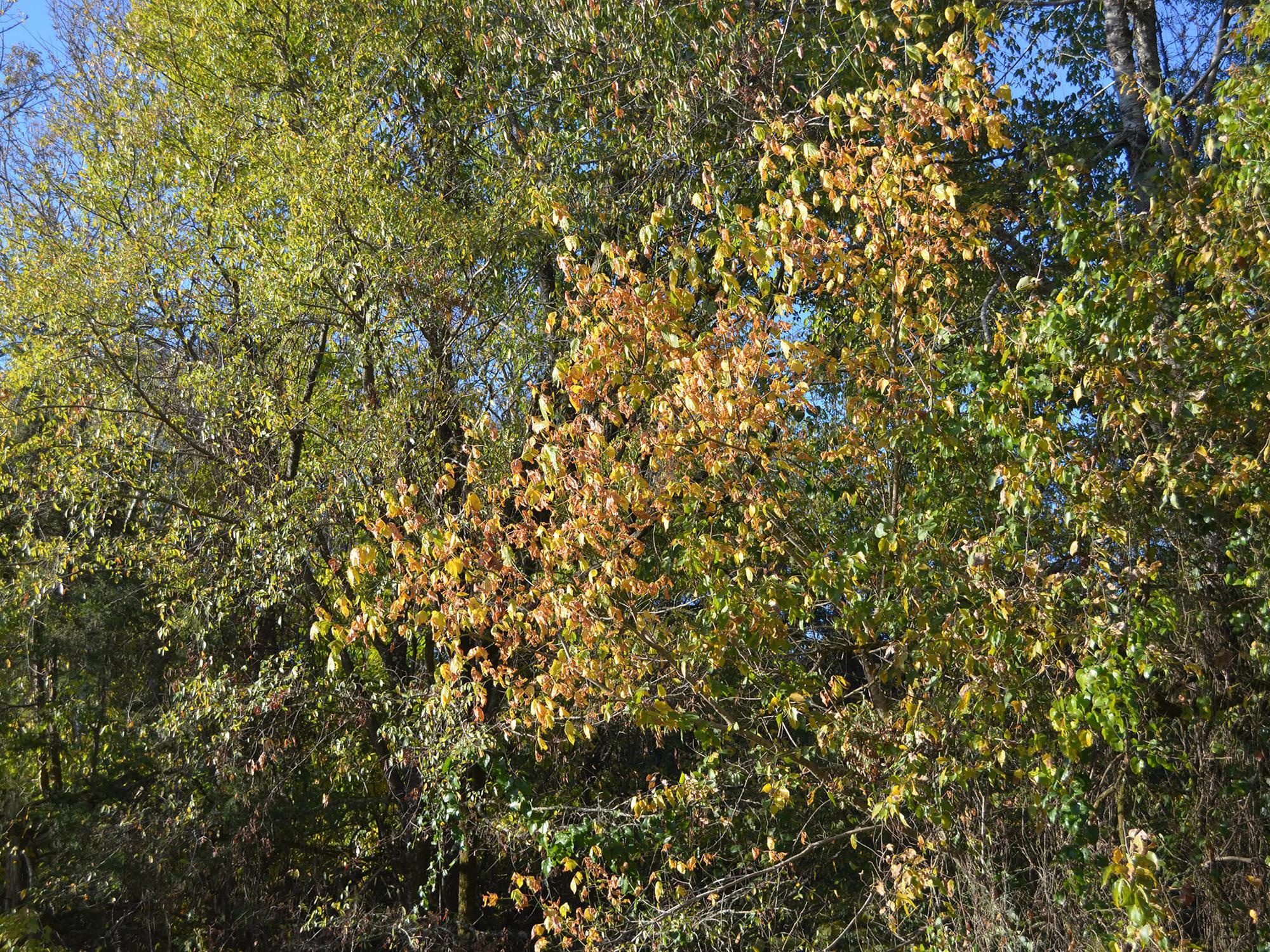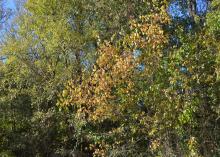Information Possibly Outdated
The information presented on this page was originally released on October 14, 2016. It may not be outdated, but please search our site for more current information. If you plan to quote or reference this information in a publication, please check with the Extension specialist or author before proceeding.
New season brings fall color, changes
STARKVILLE, Miss. -- It appears the fickle Mississippi weather has finally caught up with the calendar.
As of the Autumnal Equinox on Sept. 22, we entered autumn or fall, a glorious transitional season between the sweltering heat and humidity of summer and the cold, damp days of winter. Recent cooler days and crisp nights attest to the change.
Fall does not just bring changes to the weather. Everywhere in the natural world, living things are finishing up their “summer work” and preparing for the upcoming winter. Some animals store food to eat during harsh times or begin a journey to warmer climates. Others grow thick coats or downy feathers to survive cold weather.
Trees are living things, so they too must begin to prepare for winter. Of course, they can’t migrate, but trees transition from summer to winter behaviors.
During spring and summer, trees are hard at work manufacturing the foods necessary for their survival. These starches and sugars are formed in the leaves in a process known as photosynthesis, which is when chlorophyll absorbs the sun’s energy and uses it to convert carbon dioxide and water into food.
Chlorophyll gives summertime leaves their green color. The green pigment of chlorophyll is not the only one found in leaves. There are also yellow and orange pigments (xanthophyll and carotenoids), but these cannot usually be seen because of the dominant chlorophyll.
In fall, photosynthesis stops. Chlorophyll is no longer needed, so it begins to break down and disappear from leaves. Yellow and orange pigments, once hidden, are now visible. Trees like hickories, aspens, birches, sycamores and cottonwoods turn brilliant shades of yellow and orange.
Other trees, such as dogwoods, red maples and persimmons, have red and purple fall leaf colors. These colors are caused by another group of pigments (anthocyanins). Unlike chlorophyll and the other summer pigments, these pigments are made only in the fall and become visible as they build up in the leaves. Brown leaves can result from pigments mixing or leaf death.
Many people know that some animals, like bears, will hibernate over winter. In a similar way, trees will become dormant until spring. Starches and sugars made during the summer are stored in tree roots to be used to keep the tree alive when it has no leaves. When temperatures rise and days grow longer in spring, trees will move food energy from roots to branches to stimulate the growth of new leaves and the start of the new growing season.
Fall foliage is not only beautiful, but also big business. In the Northeast, the combination of tree species and weather results in exceptional color displays. Regional economists estimate millions of visitors will spend as much as $3 billion to view nature’s display. Mississippi fall foliage is a little more subdued, but it is still worth enjoying. Take some time to step away from the computer or TV screen and take in the nature display outdoors.

Editor’s Note: Extension Outdoors is a column authored by several different experts in the Mississippi State University Extension Service.




